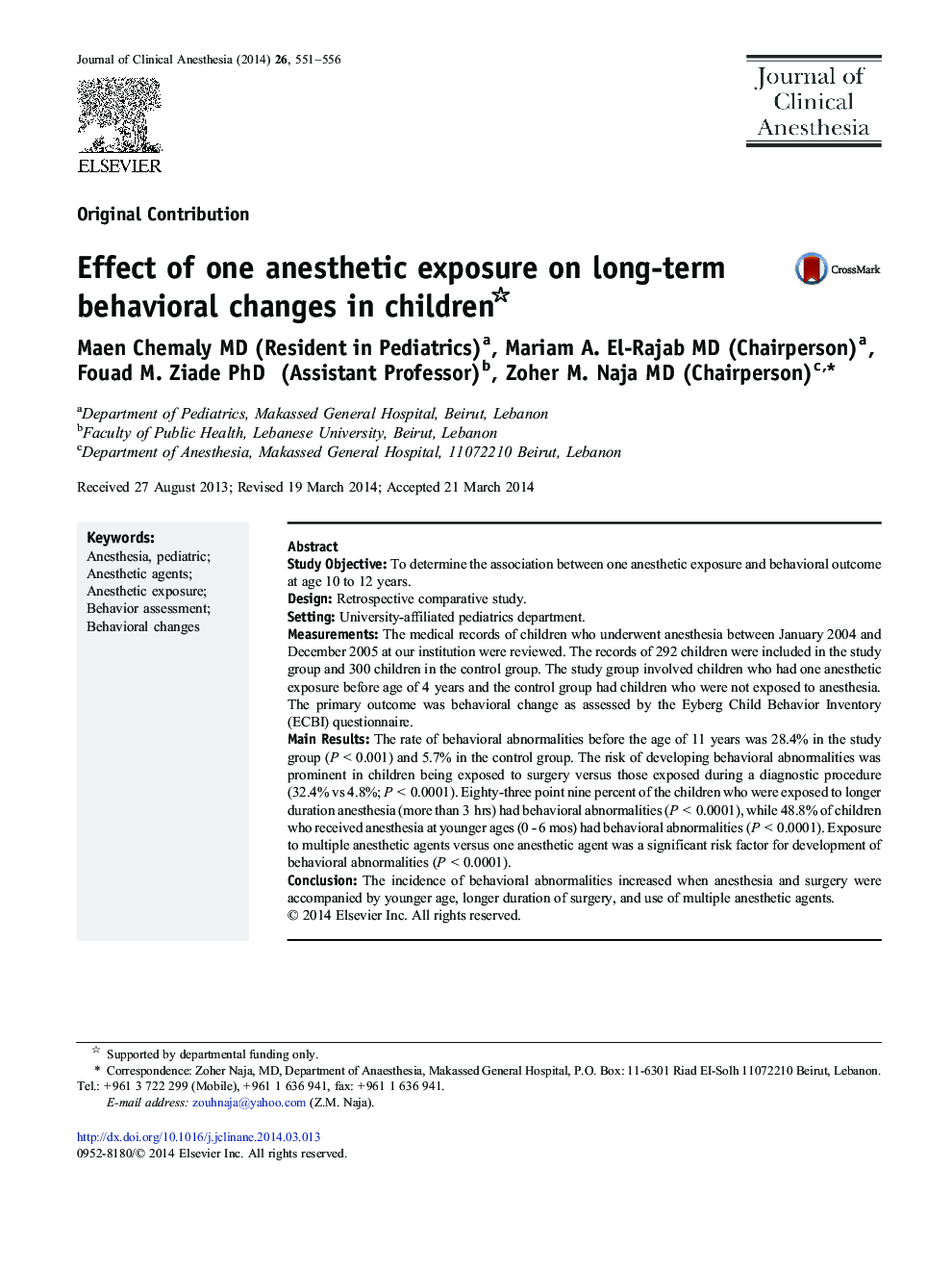| Article ID | Journal | Published Year | Pages | File Type |
|---|---|---|---|---|
| 2762282 | Journal of Clinical Anesthesia | 2014 | 6 Pages |
Study ObjectiveTo determine the association between one anesthetic exposure and behavioral outcome at age 10 to 12 years.DesignRetrospective comparative study.SettingUniversity-affiliated pediatrics department.MeasurementsThe medical records of children who underwent anesthesia between January 2004 and December 2005 at our institution were reviewed. The records of 292 children were included in the study group and 300 children in the control group. The study group involved children who had one anesthetic exposure before age of 4 years and the control group had children who were not exposed to anesthesia. The primary outcome was behavioral change as assessed by the Eyberg Child Behavior Inventory (ECBI) questionnaire.Main ResultsThe rate of behavioral abnormalities before the age of 11 years was 28.4% in the study group (P < 0.001) and 5.7% in the control group. The risk of developing behavioral abnormalities was prominent in children being exposed to surgery versus those exposed during a diagnostic procedure (32.4% vs 4.8%; P < 0.0001). Eighty-three point nine percent of the children who were exposed to longer duration anesthesia (more than 3 hrs) had behavioral abnormalities (P < 0.0001), while 48.8% of children who received anesthesia at younger ages (0 - 6 mos) had behavioral abnormalities (P < 0.0001). Exposure to multiple anesthetic agents versus one anesthetic agent was a significant risk factor for development of behavioral abnormalities (P < 0.0001).ConclusionThe incidence of behavioral abnormalities increased when anesthesia and surgery were accompanied by younger age, longer duration of surgery, and use of multiple anesthetic agents.
